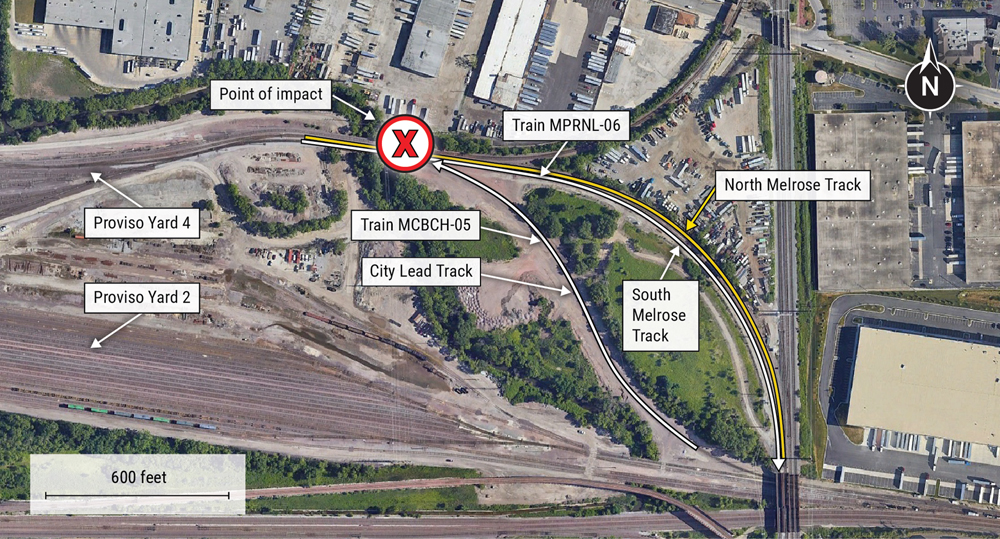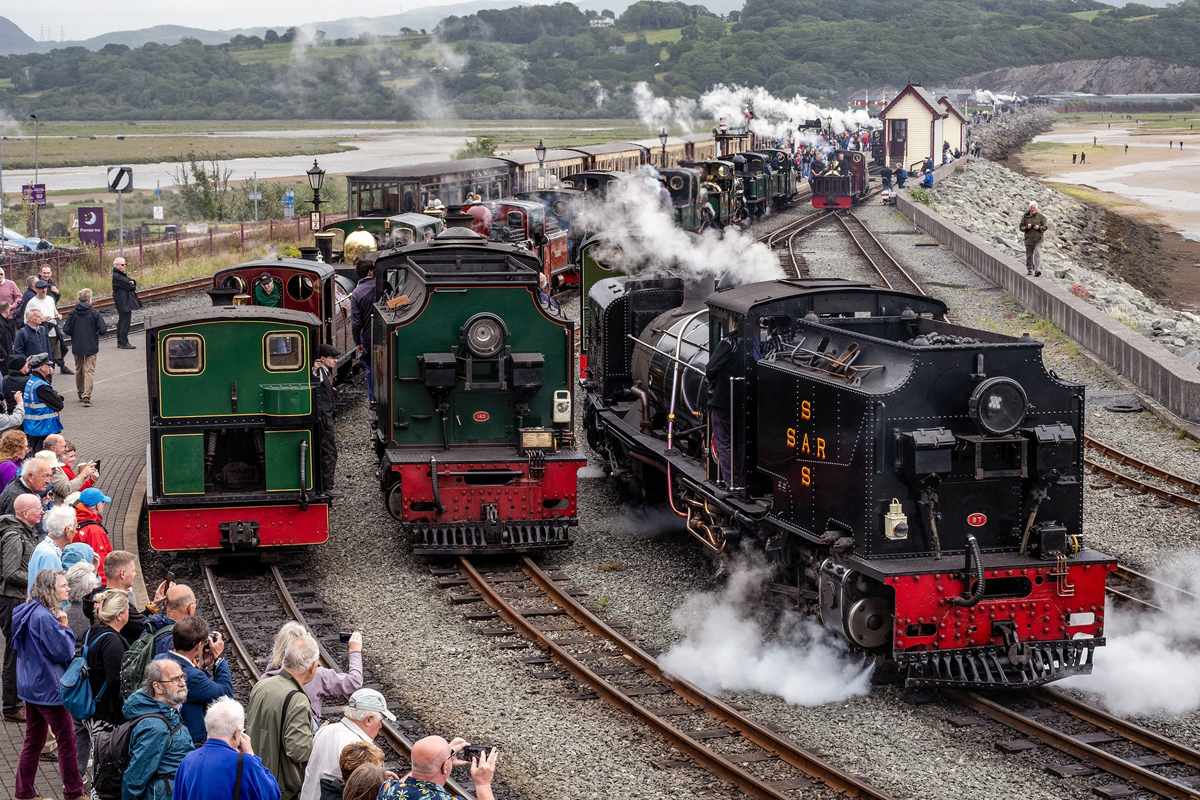Harsh winter weather — from extreme cold in the Midwest and Canada to record-breaking snowfall in the Pacific Northwest and flooding along the Mississippi River — is a major culprit in the decline of rail traffic this year, executives said this week.
Rail traffic in North America had a strong final three months of 2018, capping off growth that gained momentum as the year went on.
But the arrival of extreme weather in January and February put traffic growth on ice.
For the week ending Feb. 16, North American rail traffic was down nearly 3 percent versus the same period a year ago and was flat for the year to date, according to the Association of American Railroads.
Executives from Canadian National, Canadian Pacific, and CSX Transportation who spoke at investor conferences on Wednesday and Thursday say they expect traffic to rebound — and that they still have positive outlooks for traffic growth this year.
Extreme cold in Canada, including temperatures of more than 30 below zero Celsius and Fahrenheit, has essentially halved capacity on CN and CP as they have been forced to run much shorter trains.
“We had some 100-year type cold temperatures,” CP CEO Keith Creel says. “And with our railroad, when you run long trains, cold temperature is your biggest challenge…because it affects train length. And when you affect train length then obviously you can affect capacity and network fluidity.”
Keith Reardon, CN’s senior vice president of consumer product supply chain growth, says the railroad’s capacity investments in more crews, new locomotives, and track capacity helped CN better cope with the impact of extreme cold during the first 10 days of February.
The addition of 40 air repeater cars, which pump and maintain brake pressure, also eased the sting of the cold on operations.
CN’s traffic is running slightly below December levels. But CN expects volumes to bounce back in March, a typically strong month, Chief Financial Officer Ghislain Houle says.
Canadian railroaders are used to cold winters, CP Chief Financial Officer Nadeem Velani says.
“Even for us this has been a very challenging February,” he says.
CP’s traffic is down slightly this year but is running well below the strong levels of December and early January. Volumes will rebound, Velani says.
“It’s not lost volumes,” he explains. “It’s delayed traffic.”
The Polar Vortex that gripped Chicago and the Midwest in late January made it hard for railroad workers and draymen who handle intermodal shipments to get to work, CSX CEO Jim Foote says.
“It’s been a tough winter this year, much tougher than last year,” Foote says. “It’s just been consistent across the northern half of our network.”
The weather also disrupted shippers, such as coal mines that are struggling with operational issues this winter, he says.
Volumes were strong in January on CSX until the cold weather hit.
“It’s been impacting volumes but once the weather stabilizes we think we’ll get back on track and don’t see any issues,” Foote says. “Clearly from an economic standpoint nothing’s changed in terms of our outlook from a business performance standpoint. So we’re still very optimistic about the year.”
Norfolk Southern’s traffic was down last week but is up for the year to date. That’s about what you’d expect, Chief Financial Officer Cindy Earhart says, as traffic bounces around from week to week in line with outbreaks of cold and snow.
CSX and NS operations bounced back quickly from the cold weather that gripped Chicago and the Midwest last month, officials said.
BNSF Railway’s traffic is down 3 percent, so far, this year and was off nearly 5 percent last week.
“BNSF continues to confront frequent extreme winter weather across much of the northern tier of our network from the Pacific Northwest into Chicago,” the railroad said in a Feb. 15 service advisory. “Heavy snowfall and frigid temperatures have significantly impacted velocity and fluidity throughout the region. With only brief intervals of favorable conditions this month, BNSF teams have been limited in their ability to sustain normal operations in many areas after recovery operations have been completed.”
An avalanche blocked BNSF’s Hi-Line Subdivision in Glacier National Park in Montana last week, record-breaking snowfall in Washington State disrupted operations, and in Chicago widespread commercial power outages affected switches and switch heaters in multiple locations.
In Missouri, high water shut down BNSF’s Hannibal Subdivision as the Mississippi River overflowed its banks.
Union Pacific last week also told customers that cold weather was affecting its operations in the Midwest. UP’s traffic is up 3 percent for the year to date, largely due to the impact of landing the ONE international intermodal contract last spring.
Weather is not the only factor affecting rail traffic this year.
Frac sand shipments to Texas are down due to increased use of local sand for drilling. Intermodal traffic is lagging in part due to retailers pulling forward their purchases to avoid tariffs. And U.S. grain exports, particularly soybeans, are down due to the impact of Chinese tariffs.
In Mexico, teacher protests that began in January and ran into February, halted rail traffic on Kansas City Southern de Mexico and Ferromex, affecting intermodal, steel, and heavy crude oil traffic.
CP’s volumes also were affected by the tragic runaway and derailment near Field, British Columbia, that killed three crew members and shut down its main line west of Calgary, Alberta. The accident remains under investigation.














Should have said I’m not sure about the UP faring better. Darn autocorrect.
It sure about the UP Michael. My friend who works for a port railroad is on his 3rd hopper train being held for power. He figures he has lost 10 days on trains waiting for power. The problem I see is the cutting to the bone to inflate the numbers, and then when something does happen, such as a bad run of weather (and I am not buying that excuse either as the sole reason for the downturn), there is no slack in the system (power, crews, etc) to make up for it.
140+ years and BNSF is still surprised by winter in the north. The northern Transcon is a total mess.
I have trains held at loading terminals in ND for 3 days due to lack of power and crews. Empty trains held at Tacoma for 24-48 hours due to no power.
Then there is a neat trick where a train was at a terminal in western ND waiting to depart for Tacoma, WA. A BNSF crew got on the train and headed east, thinking the train was going to the East Coast. Until the terminal alerted them, BNSF had not idea and initially didn’t believe the terminal. It went 350 mile east to Fargo before turning around. Probably consumed 3 crews in the process. Oh, and it was a HHFT.
Multiple other faux pas of manifest cars getting mis-blocked and ending up several states past where they belong.
In the meantime, CP and UP seem to be dealing with the winter weather pretty well, at least as far as our trains are concerned. Slowdowns have been minimal.
Perhaps BNSF needs to move its HQ back to the Twin Cities.
Minor point: Frac sand is used in the completion of wells, not in the drilling of wells. Once wells are drilled and the drilling rig is released (in most cases), the well will be fraced as part of the completion process.
Everyone had better get used to long cold winters because if I am right, we are headed for an Ice Age. I know, I know, only time will tell.